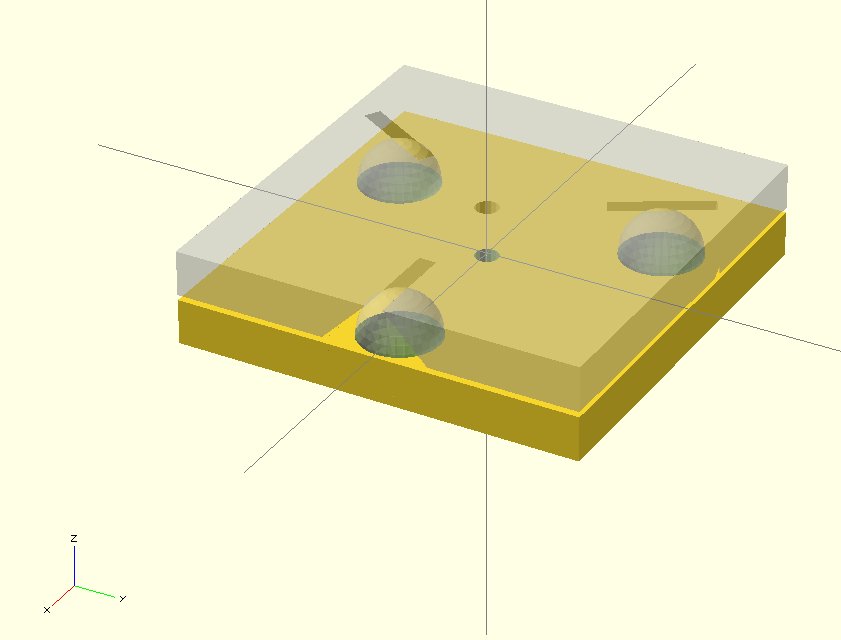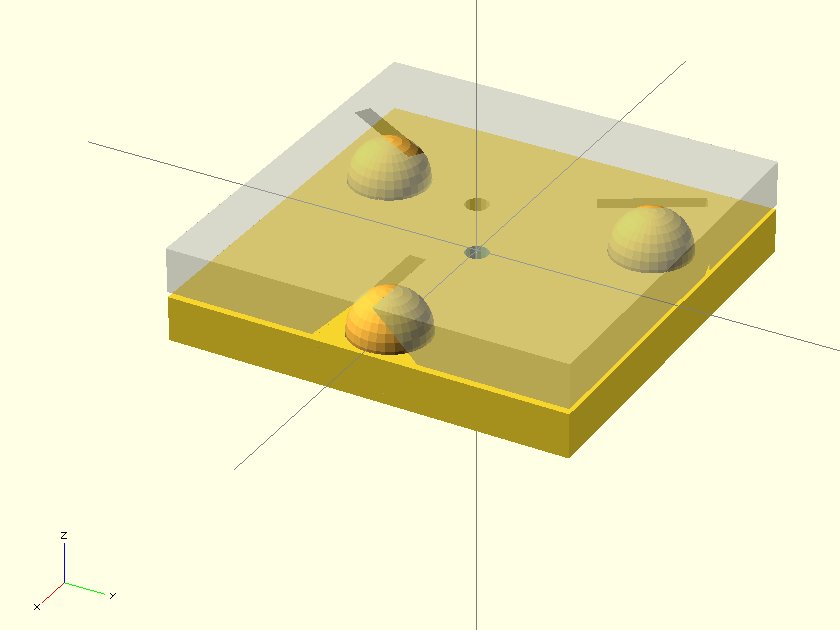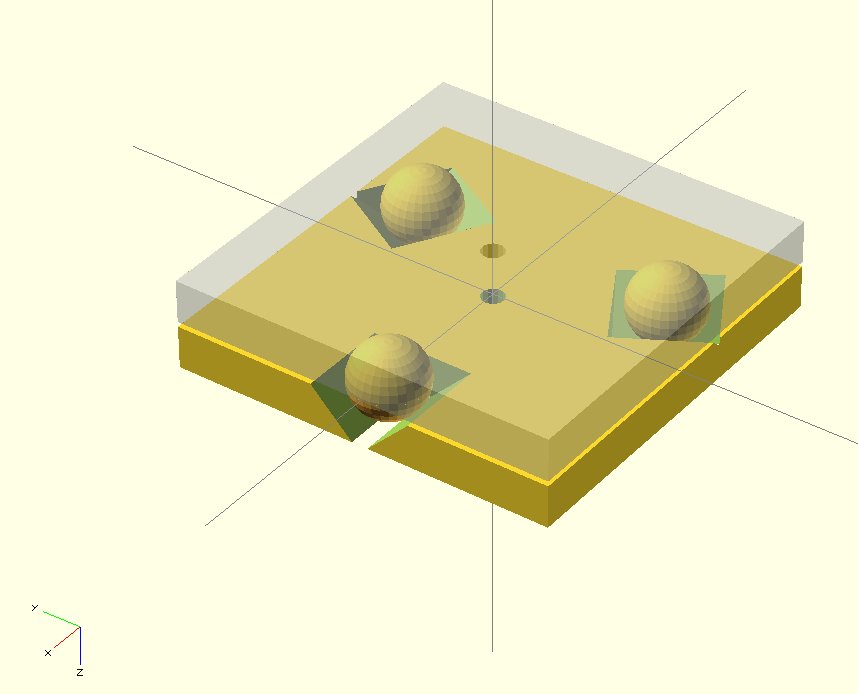HydraFabber
What to do with this page/project
- User:Eric here, was doing some looking into existing osepages on laser stuff, stumbled onto it
- Where should it go?
See also Equipment\HydraFabber
See description of HydraFabber in this video -
HydraFabber - after HydraRaptor - is a portable, multi-headed CNC fabrication machine that can do 3D printing, circuit milling, and laser cutting. It is intended to be a portable machine that can be brought to OSE Design Sprints for prototyping. During the sprints, we design machines in Sketchup, and then prototype them by printing out modular parts with a 3D printer and laser cutter. The laser cutter cuts out flat sheets that are folded to make 3D beams and other parts, and these beams form 3D frames and other 3D parts. Then the circuit mill functionality can be used to prototype circuit boards, such as controllers for automated machines.
- Please coordinate between John Log, Leo Log, Tim Boyd, and Nate Log - all work related to HydraFabber.
Specifications
Functional Spec
- 200x200x120mm mininimum build volume
- Quick change heads with accurate repeatable alignment
- Complete system includes robust carry case
- At most 10 minutes for a competent user to set up or prepare for travel
- Printer
- One material at a time
- heated bed to at least 140C
- reliable extruder
- hot end to at least 245C
- Glass print surface for flatness
- Optional tape over glass for ABS adhesion
- Fan to cool print
- at least 60mm/s practical print speed (more is better)
- Laser
- 1.5W laser cutter diode
- Circuit mill
- depth of cut control relative to surface of PCB
- easy tool change
- effective quick change PCB holddown
- Folds up into a portable suitcase so it can be brought to design sprints and other events
Functional Spec Questions
General Comment: study of open source industry standards is our best bet. It appears the 3D printer part is all go. Shapeoko has sold 1500 of their routers - so let's assume they work well enough. Search for laser diode paper cutters on the web. Combine RepRap, Shapeoko - and come up with a design. I could foresee that the Router Module is just 2 reinforcement plates for the sides of the machine to provide rigidity. Perhaps use Shapeoko as base, add a 3D printer head or laser diode head to convert to the other 2 functions? Then we have structure all worked out. Does Shapeoko appear to get us the right accuracy?
- Is 1.5w optimum? See discussion at SLS_Wax_Printer. Requirement is anything that cuts paper.
- What wavelength? That which cuts paper, may have to work with black paper
- What laser radiation safety measures (1.5w is plenty to blind)? Good question. Let's research industry standards
- Fixed laser + moving optics or moving laser? Replacement for extruder head on the triple machine
- What feed rates would be ideal? Need to look at specs of laser diode or other projects
- How accurate do we need to be for circuit milling?Same performance as Shapeoko
- What is our target track pitch? What is this
- Are we aiming for through hole or SMT? If SMT, then how small (just SOICs or QFNs and BGAs)? Same as Shapeoko
- Is a Dremel-type spindle good enough? Appears so
- Noise? What kind of noise?
- Speed (RPM)? 5,000 - 35,000
- Accuracy (TIR)?
- Mass - is it too heavy?
- Size - is it too big? No.
- Are there any reasonable off the shelf alternatives to the dremmel? Don't know. First prototype with dremel appears sound. Based on Shapeoko.
- How hard/expensive would it be to make a good small open source spindle? I wouldn't worry about it in the first iteration.
- What feed rates would be ideal? See Shapeoko
- What cutting forces are we going to get? I would say 2 lbs of force
- How do we hold down the PCB? Paper Clamps in first version?
- Will the dust from the PCB milling interfere with the 3D printing? We will have to get data on that.
Process
Quick Route to Functional Prototype
Almost any RepRap will fulfil the printer part of the functional spec. The need for quick-change heads without recalibration requires a new head mount that will position the head very repeatably each time it's mounted. A kinematic mount is under development for this purpose.
https://github.com/leodearden/kinematic-mount
The more rigid RepRap the better. A Mendel90, MendelMax, ORD Bot, or TAZ would be particularly suitable.
Complete design process
Start with Window 7, presentation page 2 - concept design.
- Software
- CAD
- CAM/slicing
- Device control
- firmware
- Control Electronics
- Embedded microcontroller
- I/O
- motor drivers
- high current digital drivers (fans, heaters, etc)
- digital inputs (eg: limit switches)
- analog inputs (eg: thermistors)
- 3 axis positioning robot
- X
- Y
- Z
- Quick change head mount
- mechanical
- electrical/electronic
- ID for head available to controller
- Quick change bed (reversible?)
- fold down mechanism
- heads
- laser
- mill
- beds
- laser
- mill
Diagram to follow.
- Potentially do an interface design that shows how modules fit together
- Then embed the original i3 RepRap STL via an STL Viewer in the wiki
Printer Reliability
- Leo's RepRap Kit had at best 4/5 print success on 8 hour overnight prints. Drift in mechanical calibration, failure of print adhesion, nozzle blockage, filament feed slip, and filament spool tangles are the main cause of failures in long prints.
- For short prints, once print parameters are established for a particular object for a particular printer with a particular material. Once you are dialed in, ~1% failure rate for prints of 1 hour. This is for unambitious - ie, safe zone - prints. Wall thickness safe, fairly thick layers, not too fast, etc.
Links
- CNC Circuit Mill Spindle
- Leo Dearden
- Opencreators Korean printer - [1]
- Suitcase 3D Printer
- Lulzbot
- RepRap Kit
- [RepRap Prusa i3|http://reprap.org/wiki/Prusa_i3]
- pursa mendel laser


